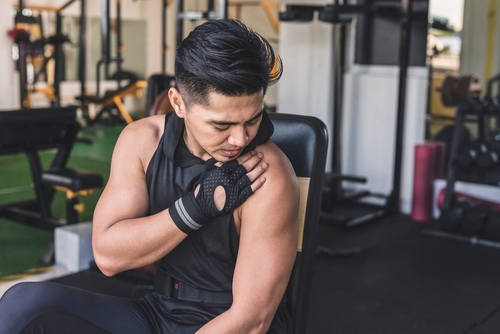Returning to Fitness After a Rotator Cuff Injury: Best Practices
November 3, 2023 3:33 pm Leave your thoughts
Sustaining a rotator cuff injury can be incredibly frustrating for anyone who values an active and fit lifestyle. Unfortunately, shoulder injuries are quite common, and they can significantly impact your ability to engage in physical activities. However, with proper care and a strategic approach, it is possible to return to fitness after a rotator cuff injury. In this blog post, we will discuss the best practices for safely and effectively getting back on track.
Understanding the Rotator Cuff Injury
Before diving into the best practices for returning to fitness, it is crucial to understand the nature of a rotator cuff injury. The rotator cuff is comprised of four muscles and tendons that surround the shoulder joint, allowing it to move and stabilize. When these muscles or tendons are strained or torn, it results in a rotator cuff injury. The severity of the injury can vary, ranging from minor inflammation to complete tears, which may require surgery. Therefore, it is essential to consult with a medical professional to accurately assess your specific injury and create an appropriate recovery plan.
Rest and Rehabilitation
The first step towards returning to fitness after a rotator cuff injury is to allow adequate time for rest and rehabilitation. Ignoring or rushing this crucial phase can lead to further damage and delay your recovery. Resting the affected shoulder reduces inflammation and prevents excessive strain on the injured area. Often, doctors will recommend immobilizing the shoulder with a sling to restrict movement during the initial healing phase.
Once the inflammation has subsided, rehabilitation exercises play a pivotal role in strengthening the affected muscles and restoring mobility. Physical therapy sessions, under the guidance of a trained therapist, are highly recommended to ensure proper technique and progression. These exercises typically focus on gentle movements, stretching, and gradually increasing resistance to build strength and flexibility.
Modify Your Exercise Routine
Returning to fitness does not mean immediately resuming your regular exercise routine or training at your previous intensity. Instead, it is crucial to modify your workouts to suit your injury and gradually progress back to your pre-injury fitness level.
Start by incorporating low-impact exercises that prevent excessive strain on the shoulder joint. Swimming, stationary biking, and walking are excellent choices to improve cardiovascular fitness while minimizing shoulder stress. Additionally, exercises that target other muscle groups can be integrated to maintain overall strength and fitness.
Gradually Introduce Resistance Training
As your shoulder continues to heal and gain strength, you can gradually reintroduce resistance training exercises to your routine. However, it is crucial to start with light weights and focus on proper form and technique. Gradually increase the weight and intensity over time, recognizing any signs of pain or discomfort that may signal overexertion. Consulting with a trainer or physical therapist to develop a customized program tailored to your specific recovery needs is highly beneficial during this phase.
Focus on Shoulder Stability Exercises
To prevent future re-injury and enhance shoulder stability, incorporating specific exercises targeting the rotator cuff muscles is essential. These exercises typically involve isotonic and isometric movements to improve muscle control and stability.
Isotonic exercises work by contracting and lengthening the muscles, such as external and internal rotations of the shoulder with resistance bands. Isometric exercises, on the other hand, involve holding a static position, like the “wall push” exercise, where you gently press your hands against a wall for 30 seconds.
Listen to Your Body
Throughout your recovery journey, it is crucial to listen to your body and be mindful of any discomfort or pain. Pushing through pain or ignoring warning signs can lead to further injury. Gradually increase the intensity and duration of your workouts, paying attention to how your shoulder responds. If you experience any pain or discomfort that persists beyond normal muscle soreness, it is crucial to consult with a medical professional to avoid exacerbating your injury.
Summary
Returning to fitness after a rotator cuff injury requires patience, diligence, and a well-thought-out plan. By allowing adequate rest, focusing on rehabilitation exercises, modifying your fitness routine, and gradually reintroducing resistance training, you can safely and effectively recover your shoulder strength and regain your fitness. Remember to listen to your body and consult with professionals throughout the process to ensure a successful return to an active, healthy lifestyle.
Need an Orthopedic Surgeon in Las Vegas, NV?
Welcome to Bernard Ong, M.D.! With extensive experience and an expert in the industry, Dr. Bernard Ong is the premier orthopedic surgeon in Las Vegas, Nevada. Our services focus on providing the very best in patient care, including orthopedic surgery, sports medicine, arthroscopy, meniscus surgery, ACL surgery, knee replacement, and more. As a sole practitioner, you know you are getting the highest level of personalized care from Dr. Ong. Contact us today for more information or to schedule your appointment!
Categorized in: Rotator Cuff Injury, Rotator Cuff Pain, Rotator Cuff Tears
This post was written by admin
